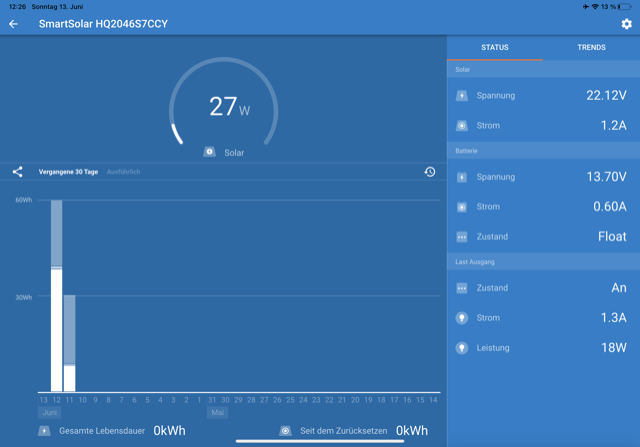I am using a small 12 V 7,2Ah lead acid batterie as buffer as I want directly charge into load. Due to small battery I have to limit charging current to 2.8 A.
If I setup 2 A as max charging current and I have a load of 1,3 A the battery is charged with 0,6 A only.
If I set 1 A charging limit the load still gets its 1,3 A but the battery is discharged with - 0,2 A. It seems the charging current value within the software is calculated by load current plus max battery charging current.
If a set a higher current limit like 4A the load still gets its 1,3 A but the battery is charged by 2,7 A.
It is not possible to set this 4 A limit as if the load drops out the charging current limit of the battery will be exceeded.
It seems there is a bug that charging current limit in the battery Setup considers battery current plus load current instead of battery current only.
It would be interesting what current limits would be considered for battery (charge/discharge) current and load current. I think both would be 20 A.
Setting up a higher charging current limit results in increased solar power.
I want to push solar power into load (USB charger for power banks) instead of the battery, but limit charging current the lead battery will be discharged and the solar power will be Limited.


